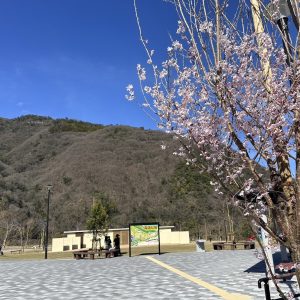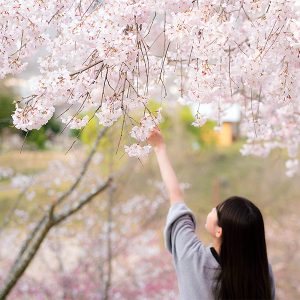TOURIST SPOT・EXPERIENCE

Address:徳島県三好市池田町ウヱノ2903−1

Address:徳島県三好市井川町西井川1359番地1
Address:徳島県三好市井川町井関
This is a park located on a hill where you can enjoy a panoramic view of the Yoshino River which is famous for early-blooming cherry blossoms. At least 100 Someiyosihino cherry trees in full bloom fills the whole park in late March. Some playground, arbors, benches are ready for family picnics.
Address:徳島県三好市西祖谷山村善徳1204
Jindai Odori's root is said to be a rain-making ritual more than 1100 years ago, which makes it different from other Japanese traditional rituals like "Protection against evil" or "Repelling Insects" rituals. This is designated in 1954, as an important national intangible ethnic cultural property for its brilliance and valiance.
Address:徳島県三好市西祖谷山村重末249
Phone:0883-87-2322
The traditional drumming performance handed down from long ago at Hachiman Shrine of Shigesue which is said to be built in 1419 in Nishi-Iya Village. It is a prayer for the abundant to harvest of grains and to disperse devils, and is performed in the Autumn festival.
Address:徳島県三好市西祖谷山村徳善110
Fusuma Karakuri is a traditional performing art using a series of picture-painted sliding doors moving crisscross to show different images in turns. Tokuzen Fusuma Karakuri is very rare because it's performed on temporary built outdoor stages. The scale is a size larger than that of Usiroyama's, totally 57 fusumas of 9 sets. You can enjoy it with its local folk songs and dances during the autumn festval period. Miyoshi City designated it as a tangible folk cultural property. (On December 20 in 2012)
Address:徳島県三好市西祖谷山村後山289
Fusuma Karakuri is a traditional performing art using a series of picture-painted sliding doors moving crisscross to show different images in turns. Although this art had once disappeared during the post-war rebuilding and high economic growth of the 20th century, it was performed again with 69 on-fusuma pictures for the first time in 50 years on October, 2005. At present, you can enjoy it with its local folk songs and dances during the autumn festival period. Miyoshi City designated it as a tangible folk cultural property. (In February 2006)
Address:徳島県三好市西祖谷山村徳善110
Phone:0883-76-0877
Its origin is said to be a part of rainmaking rituals for drought-stricken farmers, while Sugawara-no Michizane was a guard of Sanuki. * It is performed during some October Saturday night programs of Fusuma Karakuri.
Address:徳島県三好市三野町芝生822
Yoshinaga, who became the origin of Miyoshi family later, constructed the castle. It is located in the area of a river terrace which is one step higher, the north of Prefecture Road 12. The name of the town subsection is "Breech Mansion". No remnants remain. Explanation boards have been placed where the castle once stood.
Address:徳島県三好市池田町サラダ1661
Ohnishi castle was demolished by the one castle one county policy of Tokugawa Era. So, the local samurais of Ikeda took over the resposibilities to keep law & order and to guard the county border after the demolition. This particular bukemon was constructed for the residence of Mamiya family, who was a local samurai warrior of Ikeda.
Address:徳島県三好市山城町寺野
This ruins of Tao Castle lies on the summit of Mt. Shiroyama at the altitude of 460 meters. It was the historic battlefield where the local warriors fought gloriously against the advancing army of Chosogabe in the 5th year of Tensho Period (1577).
Address:徳島県三好市山城町
Yamashiro Cho, renown for the magnificence of Oboke and Koboke ravines, and the beauty of Shiozuka plateau lies in the secluded part of Shikoku mountainous region. It was once a home of brave mountain samurai warriors who fought to protect their country border and is also a home of the Yokai (Hobgoblin) legend, which is quite unique in this country. The legend of Yokais has long lived on in everyday's life of local people here, its stories often being associated with the dangerous part of region. So, the hobgoblins or peculiar phenomenon were sometimes said to be a reminder to people to be diligent in general walk of life and also to respect nature and environment. These legends together with effort of local people trying to energize the community through a little unique and fun theme was recognized and acknowledged as “Yokai Heritage” by World Yokai Society in 25th May 2008. This is the second acknowledgement after Sakaiminato City in Tottori Pref. in its history.